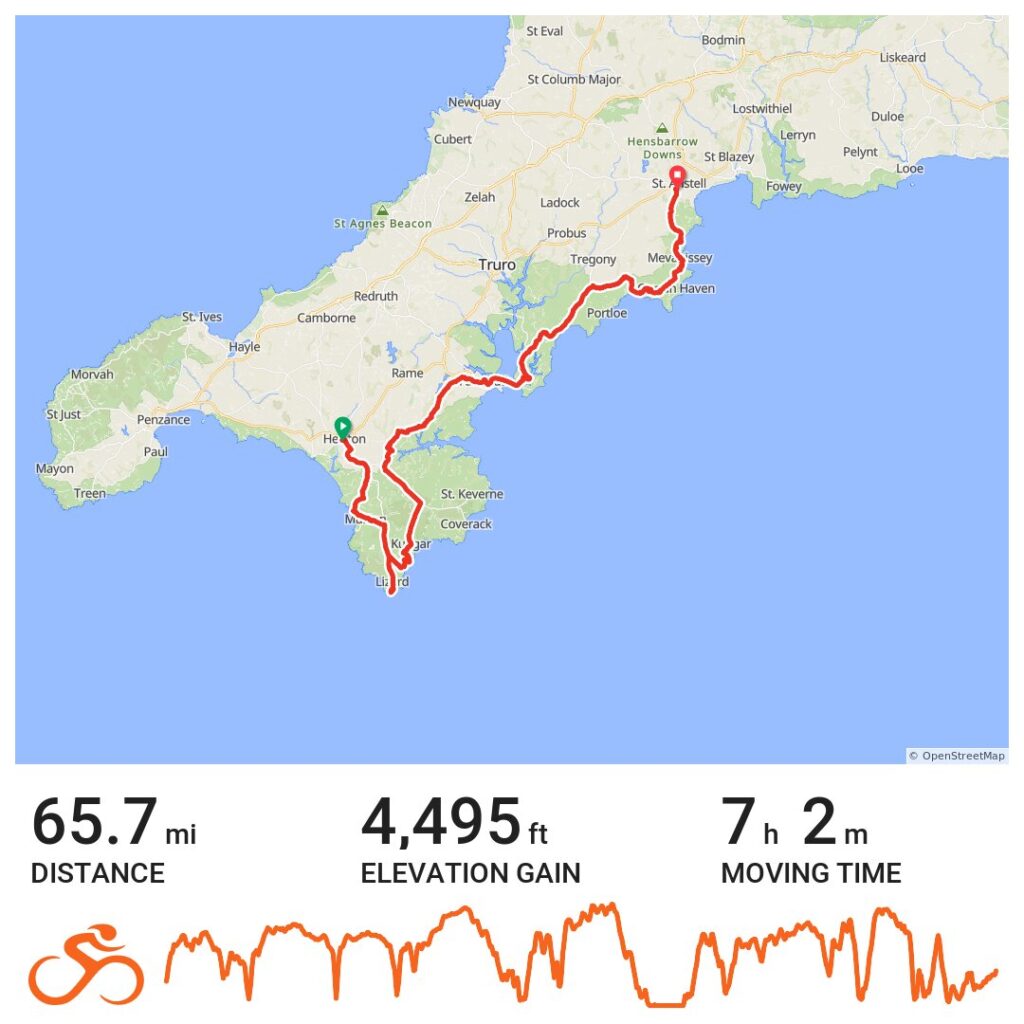I pitched up at The Blue Anchor in Helston at my usual time of 5pm. I don’t seem to alter this despite leaving at different times in the morning. Becky was on bar duty, washing glasses when I arrived and there was slight confusion as to who I was and which room I had been booked into. It seems that Booking.com doesn’t quite fit their standard but it was all sorted satisfactorily and the bike went around the back of the building whilst I was given a key to Room 3 on the first floor of the adjoining house, No 52 Coinagehall Street. The room overlooked the street which made it a bit noisy, but it was large and airy and the bathroom well appointed. As the pub doesn’t do food, I walked up the hill and found a Chinese: Singapore fried rice and sizzling beef were ok and sufficient, a bottle of Tiger washed it down and I wandered back and called into the Wetherspoons pub for a cheap pint. They had sold out of Greene King and Doom Bar and the only ales were Tintagel Castle Gold and Harbour Special. I opted for the former and it was very good at £1.99 a pint.
Despite a very comfortable bed I woke early and couldn’t go back to sleep. No change.
I went down to breakfast at 0800, a choice of cereals, yoghurt and juices and a decent fry-up produced by Becky who was once again on duty. She married a sailor and they have spent 20 years living in the area whilst her husband served at RNAS Culdrose until he retired and became a self-employed car mechanic. Her daughter is just about to start GCSEs.
I was packed and ready to go at 0900 but made the mistake of walking the bike up the hill instead of cycling down it. Either would have got me to the same place but the uphill route put me the wrong way on a one way system so I pushed for 5 minutes until I arrived at the outer perimeter of the RN Air station. I was then able to mount up and ride two sides of Culdrose which covered about 3 miles. I was heading south to Lizard Point. I last went there in 2019 when it was my last port of call in successfully visiting the four cardinal extremes of Britain. On that occasion the weather was horrible, and we had no time to enjoy the occasion. What a difference today: sunshine and no sign of rain. On the way I dropped down to Poldhu cove, which still has a WWII Pillbox on its southern shore

The climb up to the village of Mullion was steep and needed strong assistance from the motor. Another 5 miles got me to Lizard village, full of touristy shops and food outlets. I kept going and took my bike all the way down to sea level.

The view from the top of the cliff was impressive and I walked around the area for 20 minutes or so before making my way back through the village.

The road back took me to the east side of the peninsula to Cadgwith village, a fishing port that has featured in a BBC documentary about the struggle to make a living out of traditional fishing. The road down to sea level and back out again are extremely steep and the fishing fleet virtually block the narrow street. They’d been out and returned already and were sorting the catch and making everything shipshape.
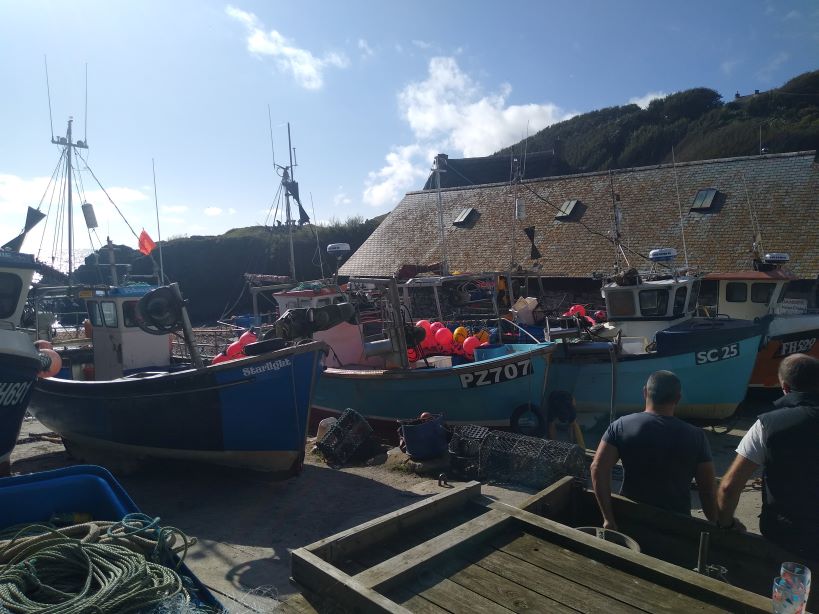
20 miles in the landscape changes significantly. Gone are the ups and downs into hidden coves; instead, the roads run straight and the terrain is flat acid heathland that has been designated the Lizard National Nature reserve.

Suddenly satellite dishes loomed up, Goonhilly Earth Station that was once the largest satellite earth station in the world but whose importance has now been reduced. Most recently it acted as the Earth station for a robotic moon landing by American Intuitive Machines Inc. Presumably now open to any bidders, it has been linked with Spaceport Cornwall in Newquay.
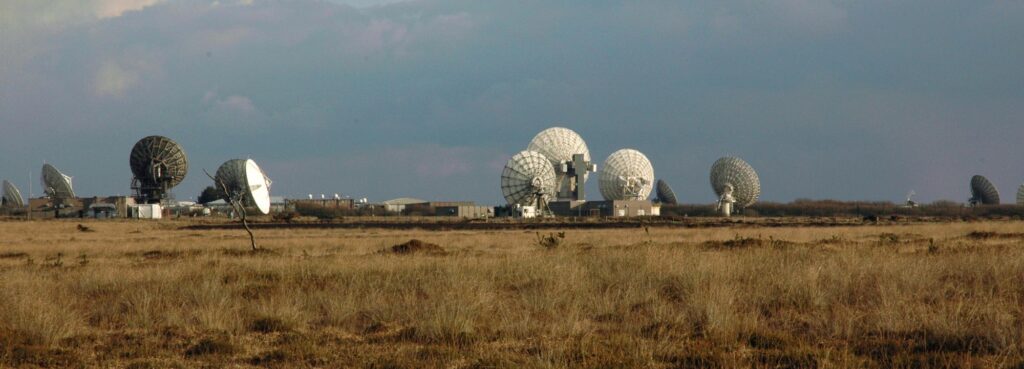
The route now turned north to cross the end of the Helford River Estuary at Gweek, whose rusting hulks don’t seem to have changed much in the last 5 years.
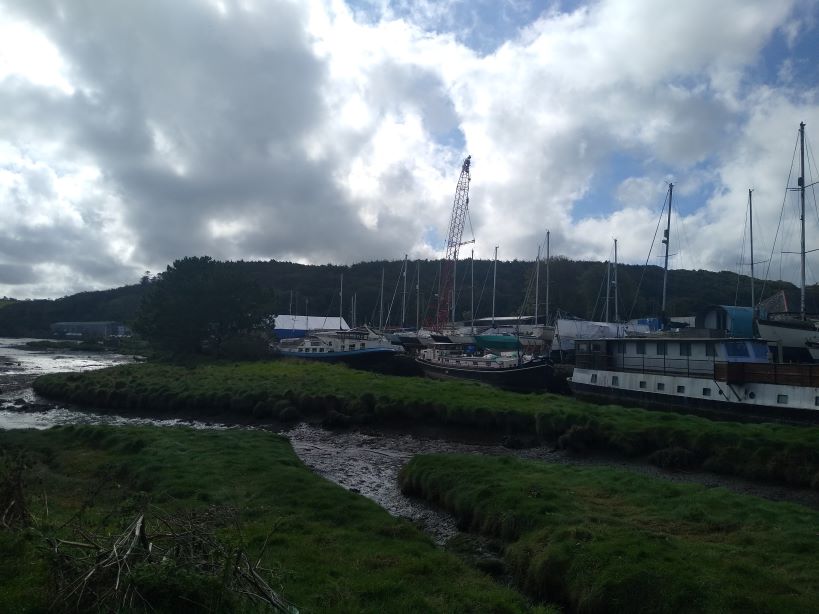
Gweek is also home to a seal sanctuary that cares for injured and orphaned seals, returning them to the wild where possible. Some can never survive in the outside world and are well cared for marine experts.
Once again, the terrain altered to the ups and downs that have become so familiar over the last 5 days, indeed at Nancenoy the road went uphill at about 20%, down immediately by the same amount and then up again, this time not quite so steeply but it was hard work.
I was making my way towards Falmouth to catch the ferry to St Mawes on the Roseland. I’d booked my place on-line at a 10% discount giving a one-way fare of £8.55 for me and the bike. I thought that I might make the 1315 Ferry from Custom House Quay but it was half and hour later before I was able to board, carrying my bike down steep steps whilst a kind girl hefted my heavy panniers into the boat. Last time I made this trip ten years ago on my Lands End to John O’Groats trip I was soaked sitting in the bows when we hit the chop in the outer harbour but today the sea was calm and the crossing uneventful.
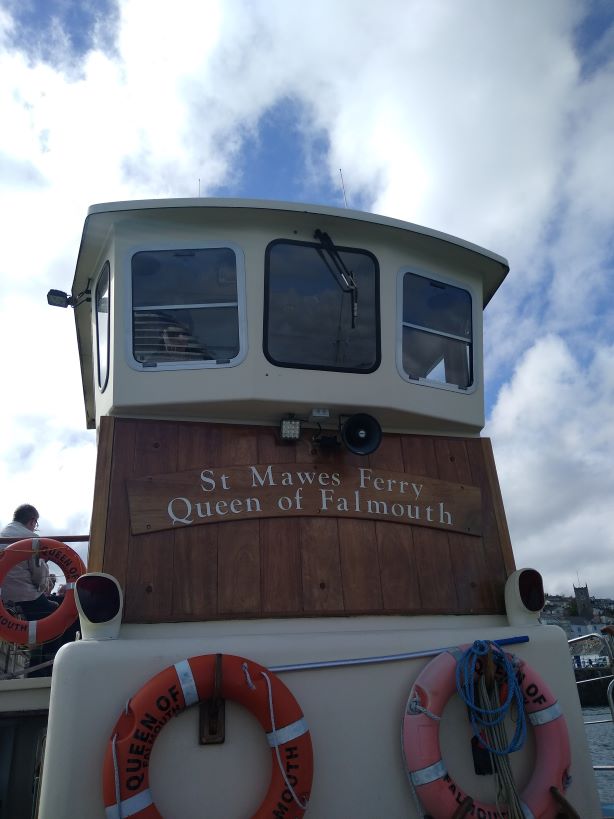
Getting off the boat at St Mawes was even more difficult and I almost slipped and fell with the bike. My helper from Falmouth kindly deposited the panniers on the quay and I was able to put everything back together again an make my way north up the Roseland Peninsula.
I was now on very familiar territory. My wife owned a cottage in Tregony for many years and the family took their hols in Cornwall. This time I didn’t visit Tregony as I decided to stay close to the coast and, instead made my way to Caerhays, somewhat surprised to find scores of pheasants pecking around the seaside sward, courtesy of the shoot run by Charles Williams, the current owner of Caerhays Castle Estate.
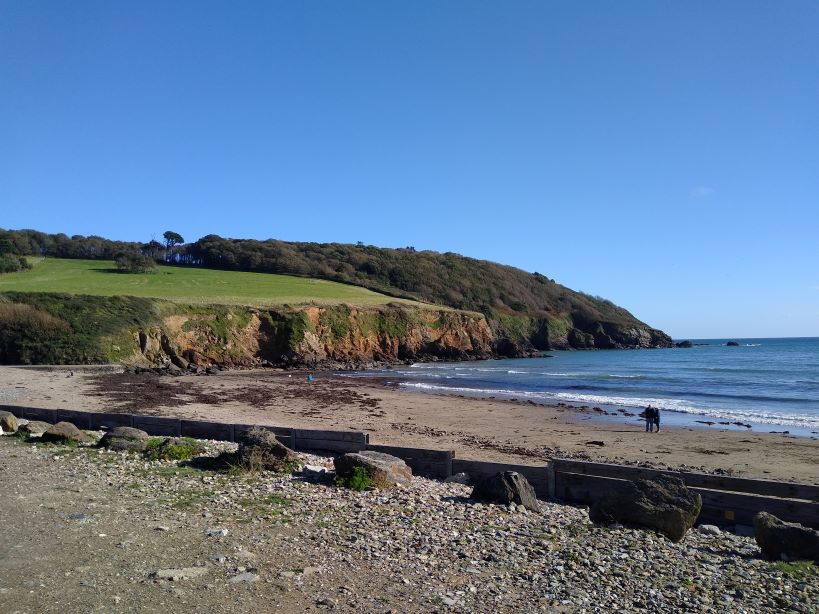
Lots more ups and downs before dropping back to sea level at Portmellon, with the waves breaking over the road.

Over the next hill to the thriving tourist town of Mevagissey, after Newlyn the second biggest fishing port in Cornwall, still plenty of visitors around in October.
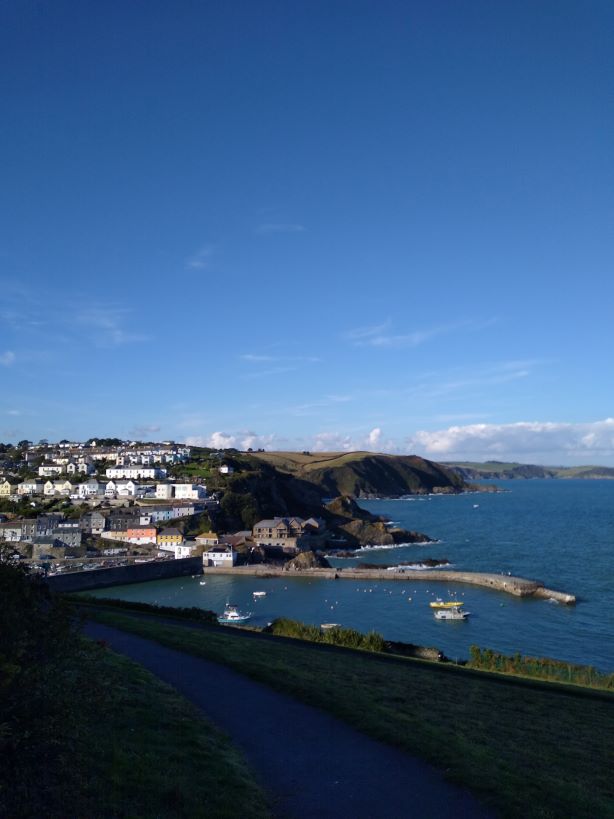
The remaining 5 miles to St Austell are fairly kind to the cyclist and I arrived at the Travelodge, as usual, at about 5pm.
